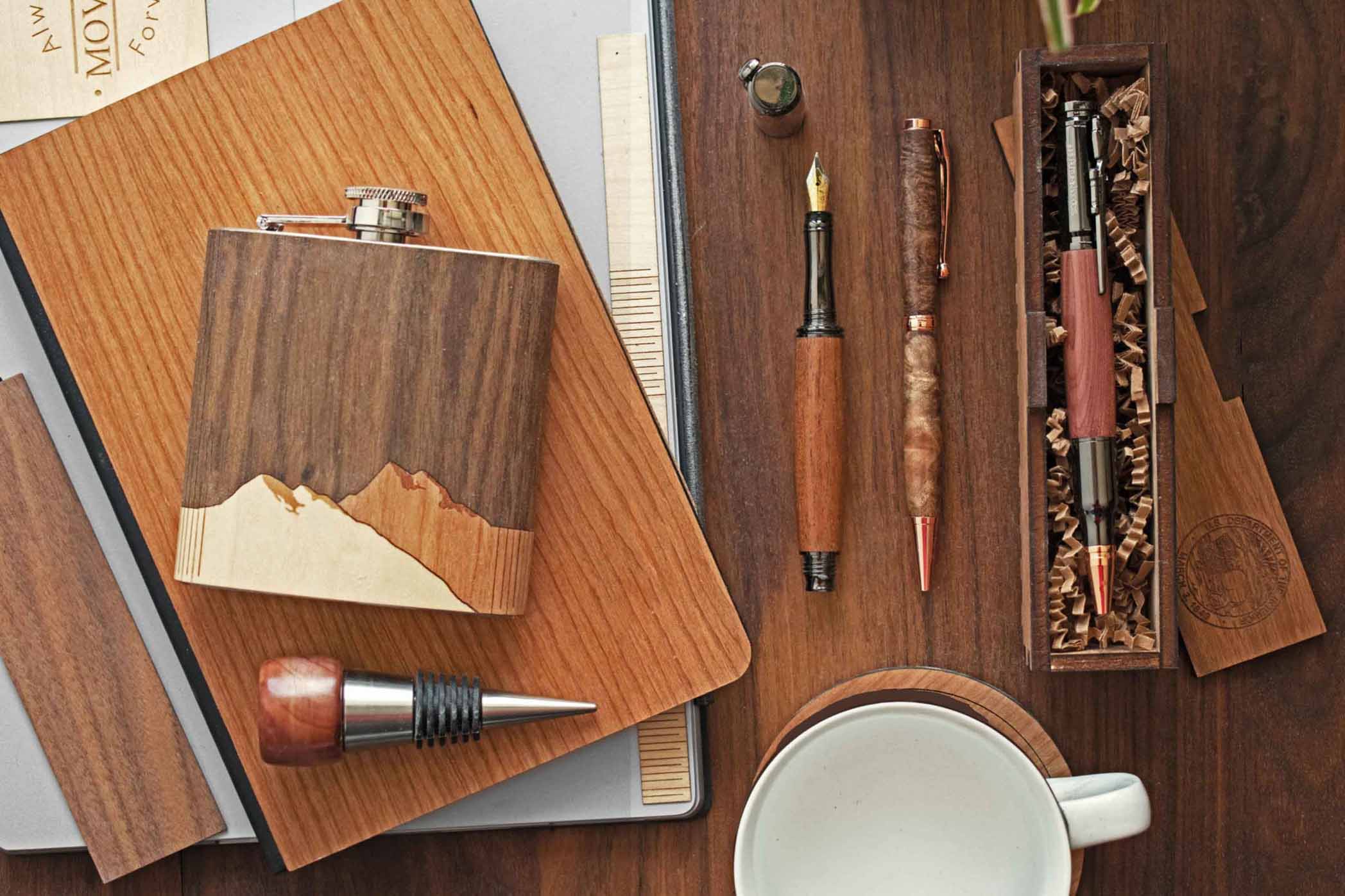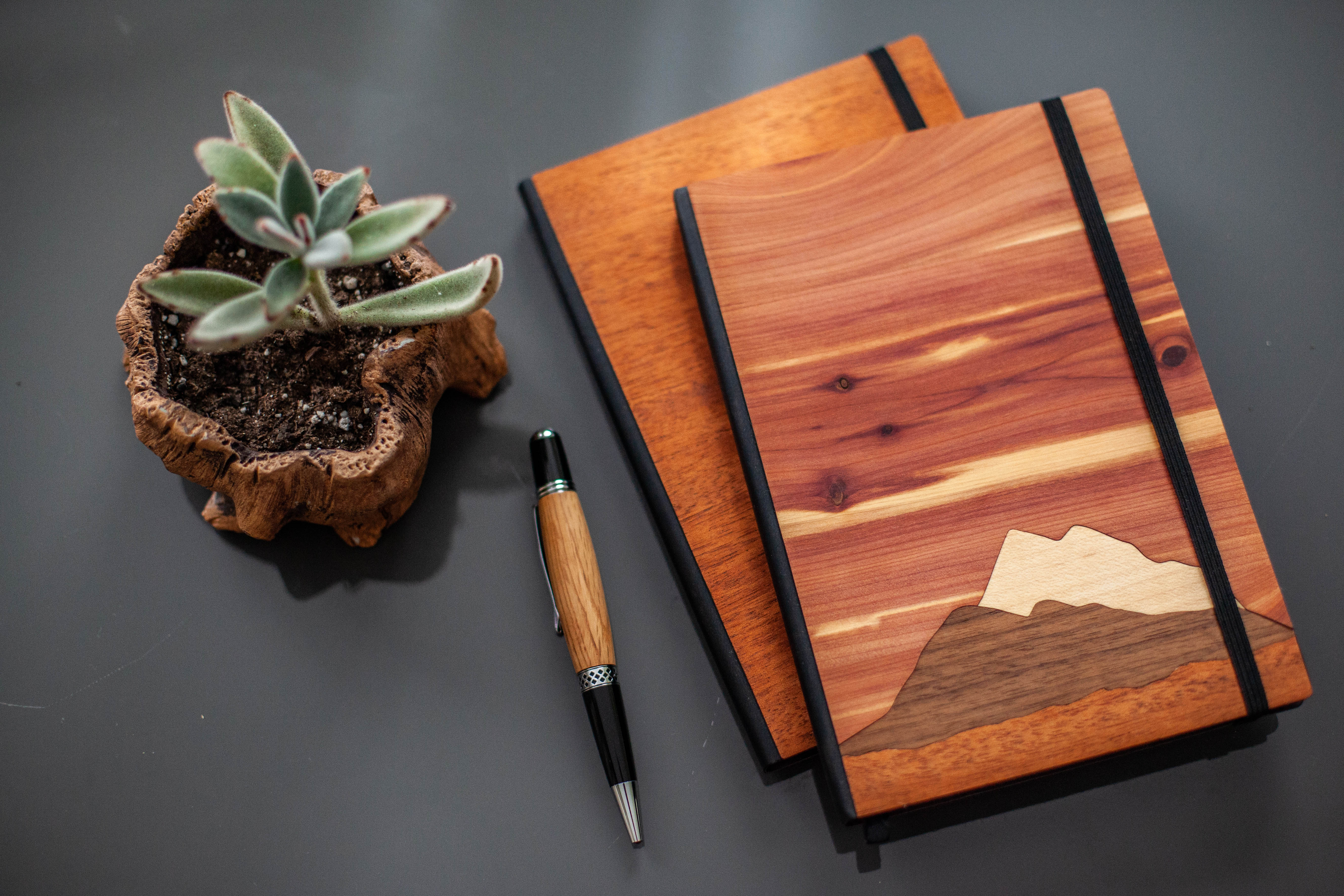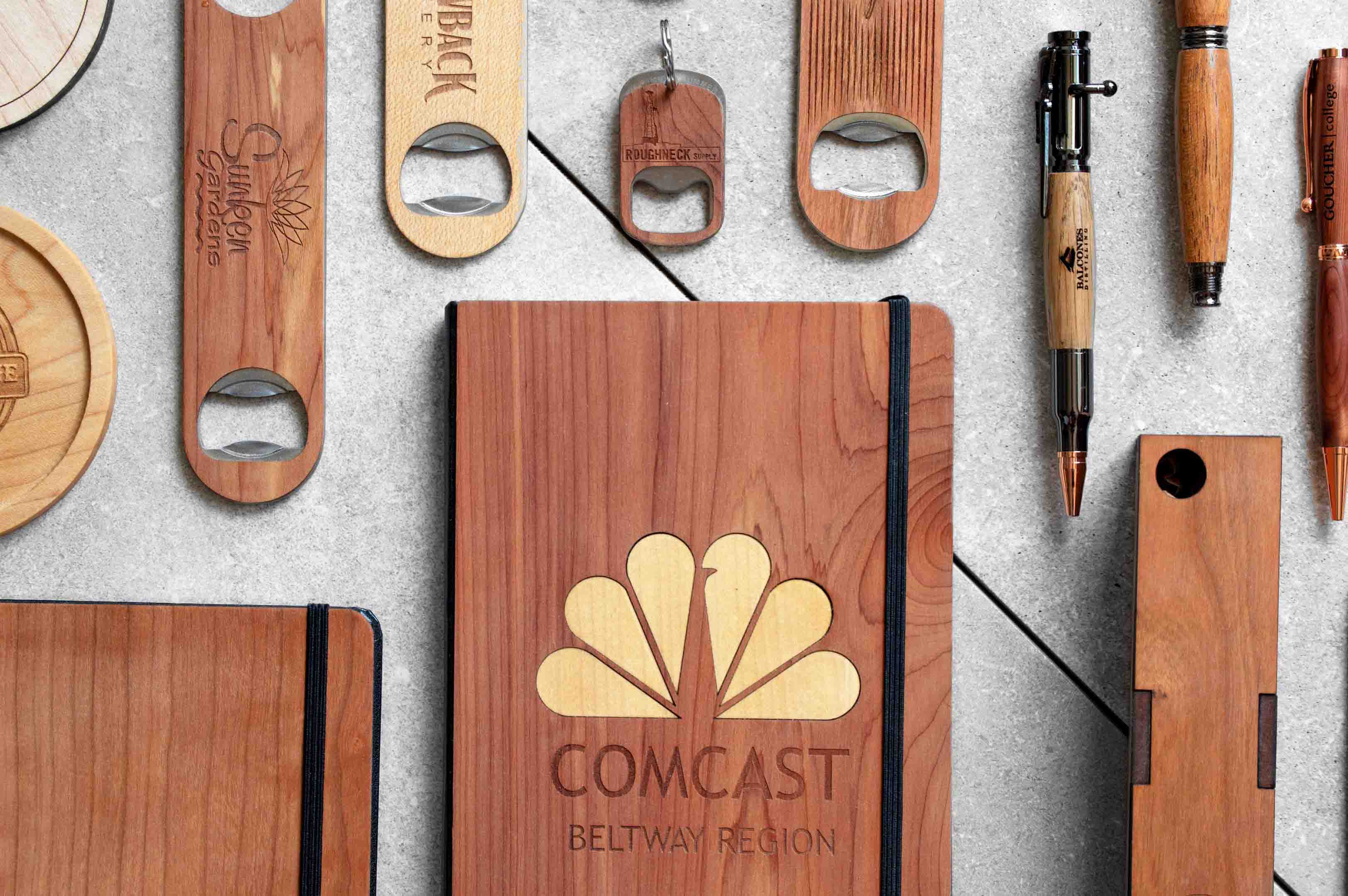
Rollerball, Ballpoint, and Fountain Pens
By Ryan Herbstsomer, 7 min reading time

By Ryan Herbstsomer, 7 min reading time
Learn the difference between fountain, rollerball and ballpoint pens. Your hand will be glad you did!
Your hand will be glad you learned the difference.
I get a lot of questions about our pens.
Even if you don’t write very often, and even if you don’t use our wooden pens, there are still many benefits to writing. The art of fine penmanship was lost with the mass production of BIC ballpoint pens that you can see in everyone’s bag today,
There are a ton of benefits from hand journaling, drawing, and personal letters (but that can be another article, I’m getting a little off track already…).
With the prevalence of computers, issues like carpel tunnel syndrome are becoming all too common. Let’s see what we can do to help out…
Let’s start with the question that’s on everyone’s mind. Which pen style is the best to write with?
This is another common question about different pen types, but unfortunately, its equivalent to asking who the best football team is, or “what is the best beer?” The “best” type of pen depends on many factors, and can be very different from person to person. The fountain pen is considered the most extravagant, but I personally prefer the rollerball style.
(Also if you were wondering, the Baltimore Ravens ARE the best football team, and there’s no better brewery than Baltimore’s DuClaw ;)
Before we start, no a fountain pen is not a big feather. The “big feather’s” were used in Western culture, and were invented in Spain in the 600s. These feather’s, usually made of a goose’s tail feather are collected today, but almost never used due to their extremely poor writing quality.
The first “real” fountain pen was invented by Lewis Waterman in 1884, and his company, Waterman, is still one of the biggest fountain pen companies today.
The story goes that Waterman was an insurance salesman who had a meeting with an important client, and brought a fountain pen to impress him. When the client went to sign the document, the pen wouldn’t write. Without a signature, Waterman lost a great deal of money.
Some say the story was made up as a sales scheme, but I still think it’s a cool story to tell when you show your friends your slick fountain pen.
The first fountain pens were called “eyedroppers” because you would literally refill them with an eyedropper. The main issue with these pens was that they were made of hard rubber. When you would hold the pen to write, the rubber would expand and the pen would leak. Not a great thing when you carry your pen in your white shirt pocket.
Fountain pens today have a few working parts (not including the cap, clip, etc). The tip of a fountain pen is called the nib. Nibs were originally made of two separate pieces of gold and other soft materials so that when you pressed onto the paper, they would separate and let the ink flow through. This worked well, except when they were used frequently or aggressively, the soft metal would bend.
The solution? A small ball of a hard metal (usually iridium) placed on the very tip of the pen so that you are not pressing directly onto the soft metal.
One of the cool things about fountain pens is their variability. They can be made with 3 line widths (fine, medium, and broad) and there are 3 writing styles (straight, oblique, and italic), giving a total of 9 different standard nib sizes.
Today’s fountain pens can be filled in two main ways:
If you have never written with a fountain pen, make it a priority to do so. You owe it to yourself to at least give your friend’s a try, or at least gift it to your dad or brother and “borrow” it from time to time. Here is our selection.
The first ballpoint pen was put on the market by Laszlo Biro in 1938, right before WWII.
Ballpoint pens are the most common pens that you will see on the market today. They are the least expensive because they are commonly mass produced. While many are of terrible quality, there are some very high quality ballpoint pens like Parker brand pens.
Ballpoint pens use a ball (obviously) made of a hard metal, usually Tungsten, that is placed tightly into the end of the ink cartridge. When you start writing, the ball moves back and lets the ink flow through. The ball will spin and rub the ink onto your paper. Unfortunately, if part of the ball doesn’t have ink on it, the pen will not write for a short time, causing the pen to “skip”. This is a common reason that people prefer to write with ink pens.
The major benefit of ballpoint pens it that the wont smudge like fountain and rollerball pens do. This is because ballpoint pens use a paste, rather than actual ink.
The other benefit of a paste ink is that it’s less expensive both because the paste is cheaper, and ballpoint pens don't need a cap (which is how the “click” pen was born)
Without the need for a cap, you can find some pretty cool ballpoint pens on the market today.
Here is a cool one
And here are our own bolt action pens that use Parker ballpoint refills, which happen to be our best sellers.
These are my personal favorite. The rollerball pen writes with a thick, dark line.
Rollerball pens work in the same way as a ballpoint pen, except that instead of a paste that ballpoint pens use, they use real liquid ink. The mechanism of a rollerball pen is explained above so I’ll spare you the repetition.
The main benefits of rollerball pens is that they use a lot more ink than a ballpoint pen (the standard is 3-4 times as much!). This can cause a problem with smudging, so use caution if you are a lefty.
(You can see our rollerball pens here.)
Last but certainly not least, a breakdown of the benefits of each pen style:

Obviously the chart is based on opinion and how important each of the categories are to you. If you are always on the run, maybe convenience will weigh higher for you. (Please note that our pricing has since updated for all pens as we continue to improve on quality - Updated 2022).
Feel free to check out our full line of handmade wood pens and wooden journals.
If you liked this article and want to see more like it, subscribe to our FREE email list for updates, more articles, and exclusive sales that are only available to our email subscribers!
Hey, thanks a lot for a wonderful read. I wanted some clarity on what to buy, as am planning to do some writing for my own good, wanted to do with something good :) Guess, it’s fountain pen for me, I liked what you wrote! They are the most elegant of all!
I enjoyed your website very much . I am a pen turner in Clermont Fl.we moved to Florida from Reisterstown after the blizzard of 1978. B,est of Luck , The Bored Car-Pen-Ter

In our digitally driven, fast-paced world, the convenience of online shopping often means gifts are just a click and a shipment away. However, at A...

In a world that's constantly demanding our attention, a handwritten note is a quiet act of rebellion. It's a way to reclaim our humanity, to forge ...

Choosing custom branded wooden gifts from Autumn Woods Co. is more than just a purchase; it's an investment in building stronger relationships, enh...